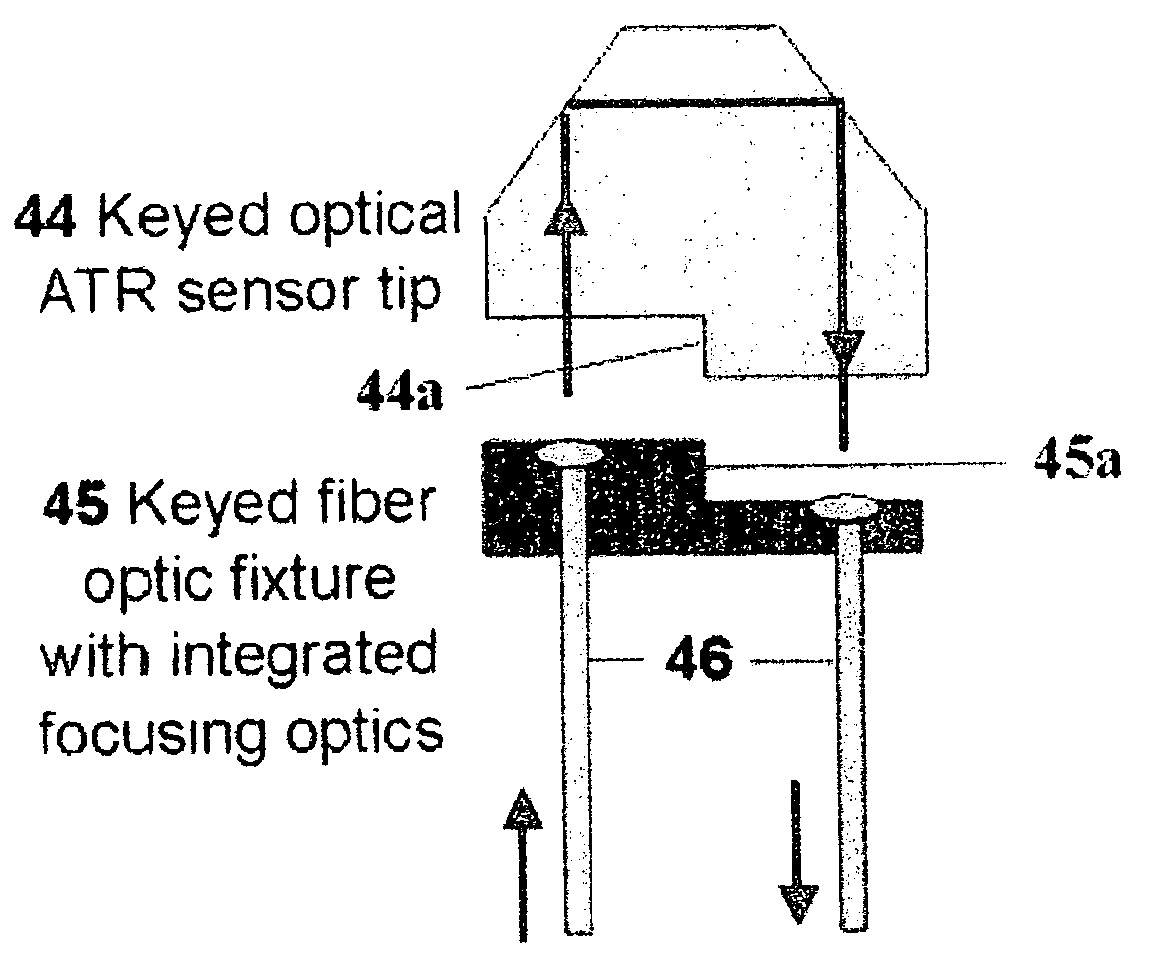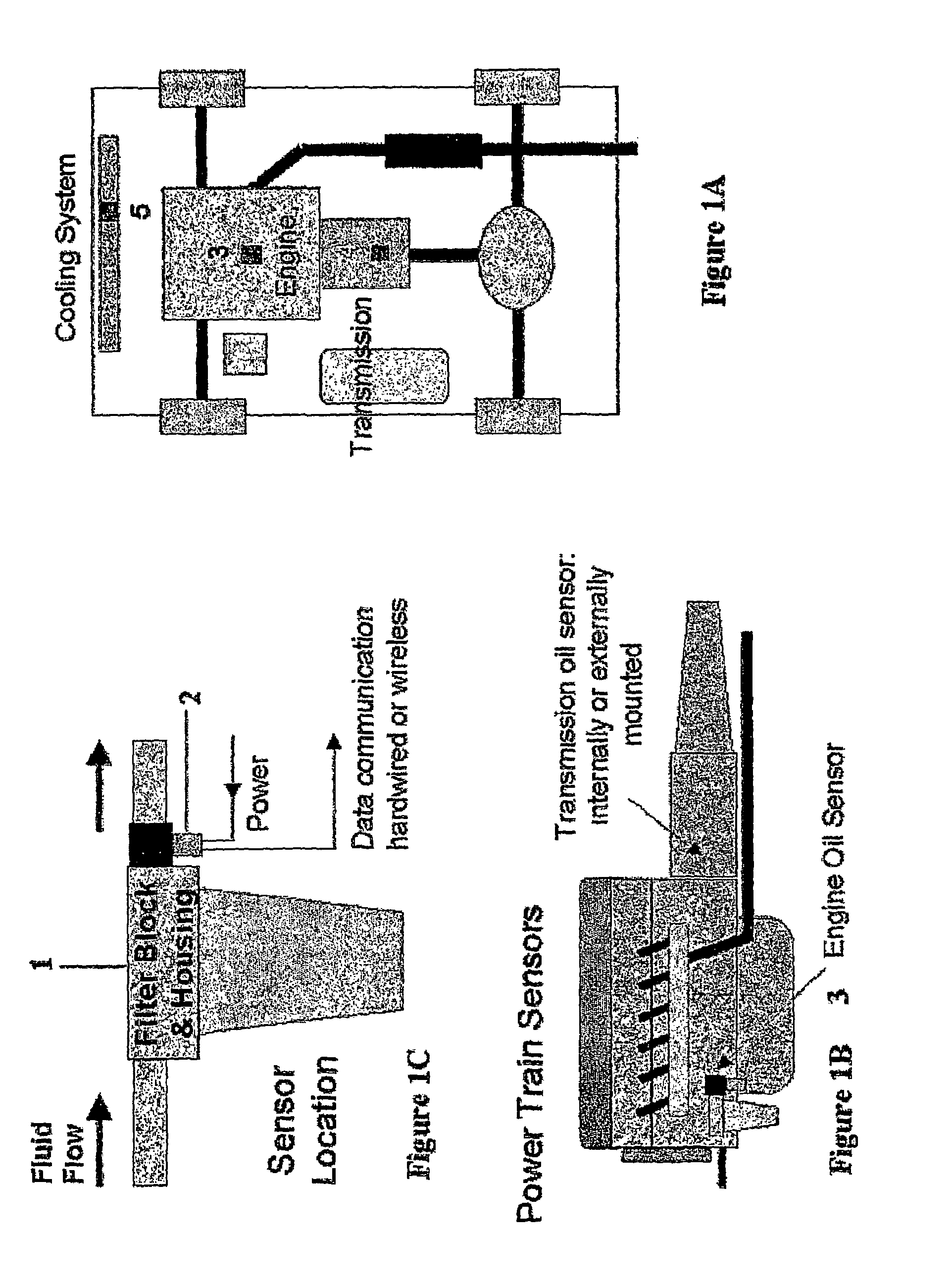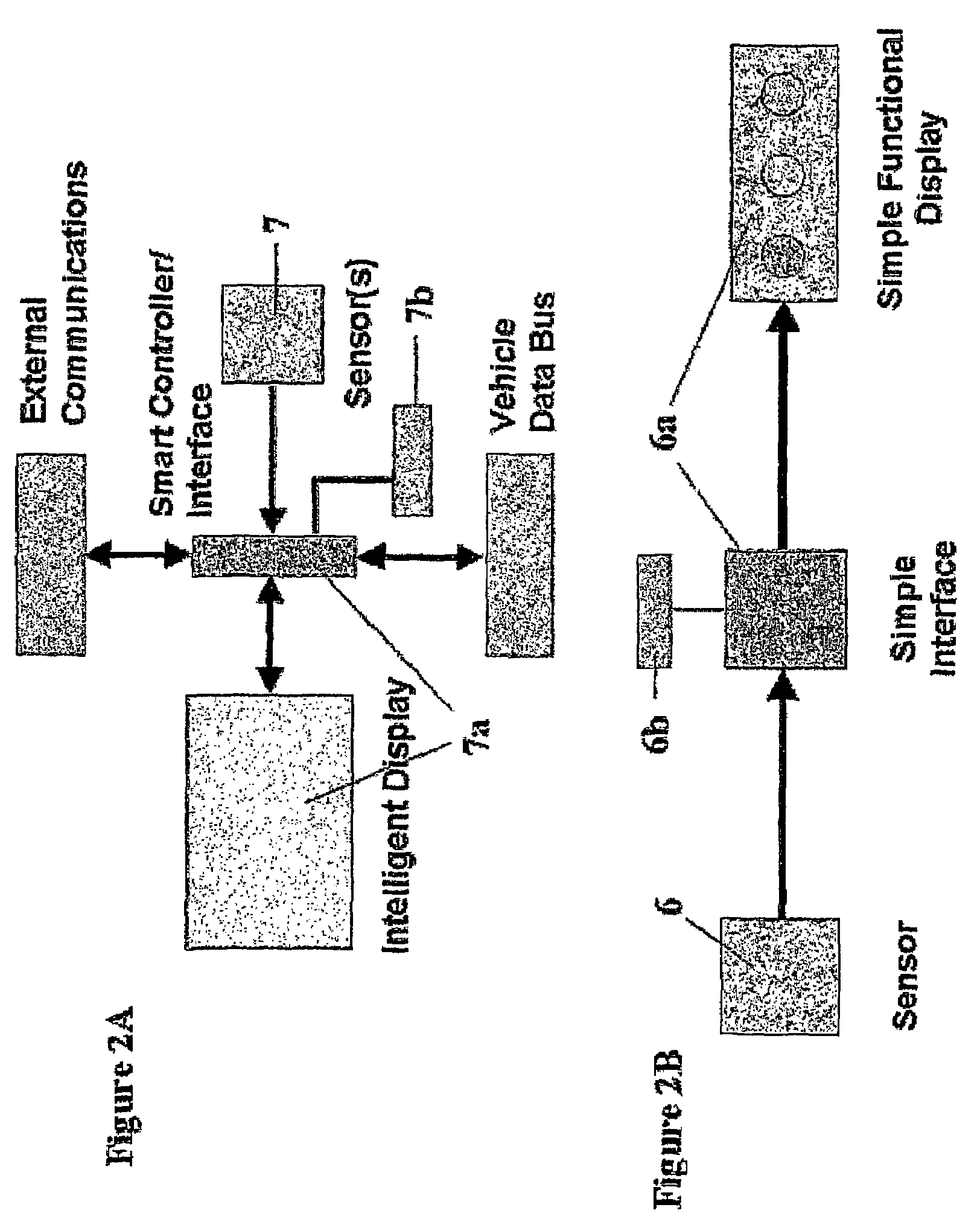Low-cost on-line and in-line spectral sensors based on solid-state source and detectors combinations for monitoring lubricants and functional fluids
a lubricant and functional fluid monitoring and detector combination technology, applied in the field of optical sensors, can solve the problems of difficult material implementation, low cost of optics and associated materials, poor reproducibility, etc., and achieve the effects of reducing fouling, enhancing surface protection, and low cos
- Summary
- Abstract
- Description
- Claims
- Application Information
AI Technical Summary
Benefits of technology
Problems solved by technology
Method used
Image
Examples
Embodiment Construction
[0043]The system will now be described in terms of the main functional components:
[0044]The implementation of the sensor in automotive and heavy equipment applications is signified in FIGS. 1A to 1C. Prime applications for the sensor are for soot level monitoring in heavy-duty diesel engines and oil condition monitoring (oxidation and nitration) in gasoline and natural gas-fired engines. In both cases, a good location for the sensing device (2) is at the output side of the engine's primary (or secondary) filtration system, where the sensor is inserted into the stream on the return side of the filter-housing block (1). The device, as indicated will receive low-level power, which is either provided by a data bus or via the normal power distribution system of the vehicle. The output from the sensor, in some form of data communications, is fed back to a display, a data bus, or an on-board computer system. The advantages of mounting the sensor on the filter block (3) are that the access ...
PUM
 Login to View More
Login to View More Abstract
Description
Claims
Application Information
 Login to View More
Login to View More - R&D
- Intellectual Property
- Life Sciences
- Materials
- Tech Scout
- Unparalleled Data Quality
- Higher Quality Content
- 60% Fewer Hallucinations
Browse by: Latest US Patents, China's latest patents, Technical Efficacy Thesaurus, Application Domain, Technology Topic, Popular Technical Reports.
© 2025 PatSnap. All rights reserved.Legal|Privacy policy|Modern Slavery Act Transparency Statement|Sitemap|About US| Contact US: help@patsnap.com



